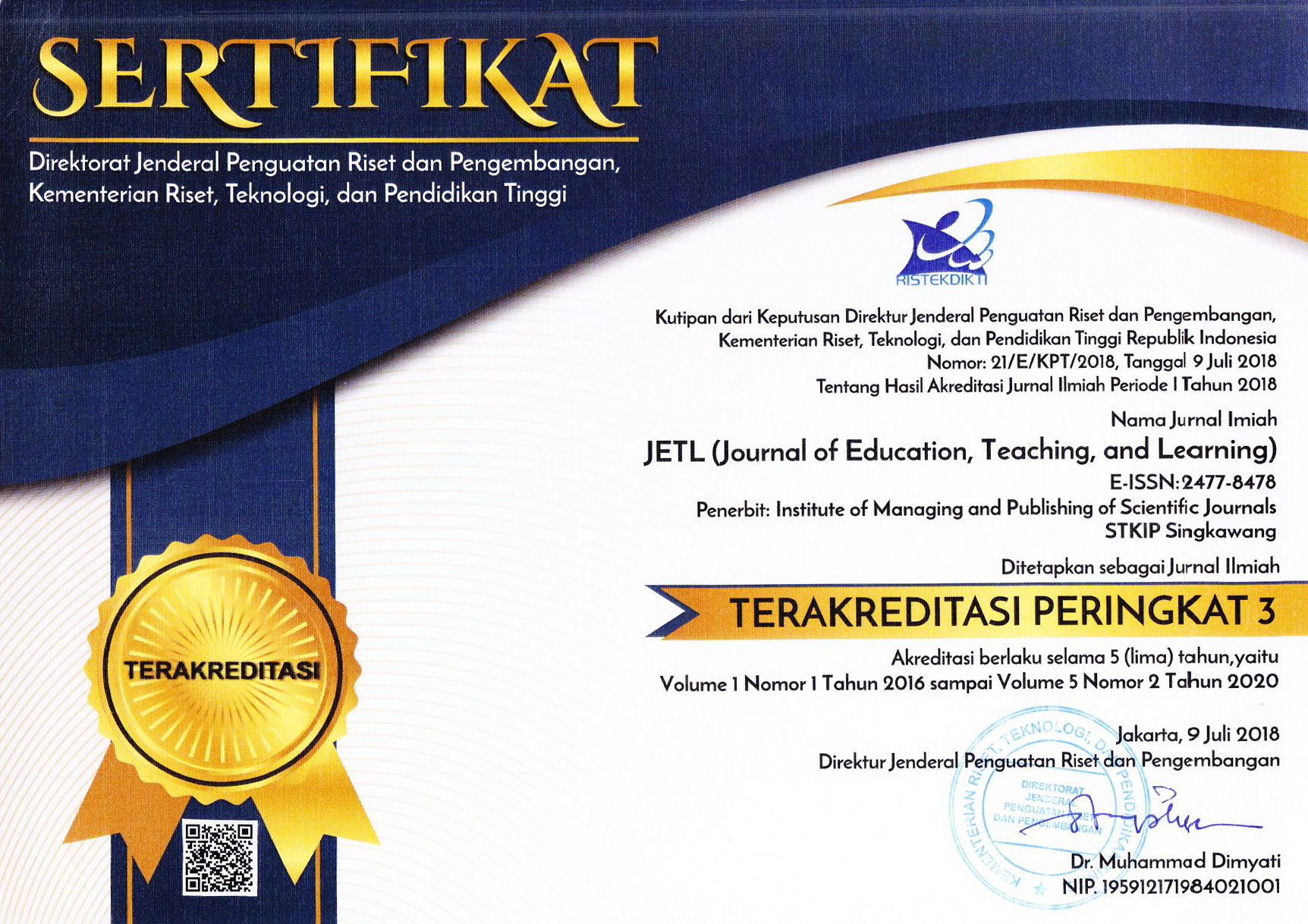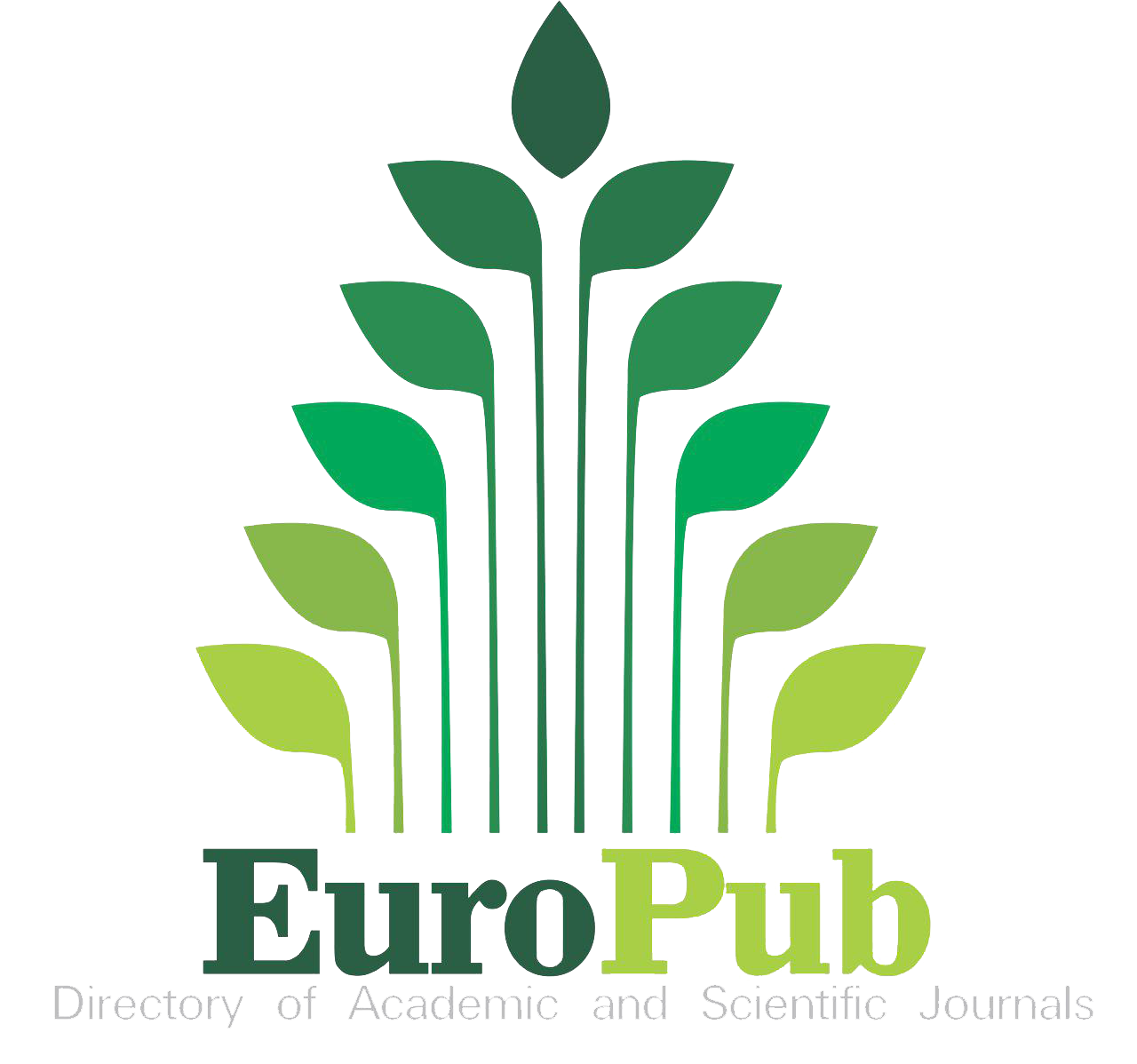Students' Mathematical Communication Ability and Disposition in The Implementation of Micro Didactic Design at Junior High School
Abstract
Keywords
Full Text:
PDFReferences
Ardiansari, L. (2017). Penerapan Model Pembelajaran Kooperatif Tipe Group Investigation didukung Metode Resitasi untuk Meningkatkan Hasil Belajar Siswa Kelas VIII SMPN 1 Bangorejo pada Materi Faktorisasi. Aljabar. Ar-Risalah, 15, 38-51.
Brendefur, J., and Frykholm, J. (2000).“Promoting Mathematical Communication in The Classroom: Two Preservice Teachers’ Conceptions and Practices, Journal of Mathematics Teacher Education, 3, 125-153.
BSNP. (2006). Standar Isi untuk Satuan Pendidikan Dasar dan Menengah. Jakarta: BSNP.
Carpenter, T. et al. (2005). Algebra in Elementary School: Developing Relational Thinking, International Journal on Mathematics Education, 37, 53-59.
Cortes, Nomi, and Goodman. (2013). A Double Dose of Algebra. Cambridge: Harvard Kennedy School, 13, 1-7.
Fauzan, A. (2002). Applying Realistic Mathematics Education (RME) in Teaching Geometry in Indonesian Primary School. Tesis. University of Twente, Enschede.
Frudenthal, H. (2002). Revisiting Mathematics Education. London: Kluwer Academic Publishers.
Lacampagne, C.B., Ed, etc. (1993). The Algebra Initiative Colloquium, Educational Research and Improvement, 2.
Lampert, M. (1990). When The Problem is not The Question and The Solution is not The Answer: Mathematical knowing and teaching, American Educational Research Journal, 27, 29-63.
Laurens et al. (2018). How Does Realistic Mathematics Education (RME) Improve Students’ Mathematics Cognitive Achievement?, EURASIA Journal of Mathematics. Science and Technology Education, 14, 569-578.
Lumentut, C.P., Ali, M.T.M., and Hasbi, M. (2015). Peningkatan Hasil Belajar Siswa Kelas VIII SMPN 14 Palu dengan Model Pembelajaran Kooperatif Tipe NHT berbantuan Blok Aljabar pada Materi Perkalian Faktor Bentuk Aljabar. Jurnal Elektronik Pendidikan Matematika Tadulako, 2, 238-248.
May, T.C. (2005). Teaching Maths to Pupils with Different Learning, Styles. London: Paul Chapman Publishing.
National Council of Teachers of Mathematics (NCTM). (1989). Curriculum and Evaluation Standards for School Mathematics. Reston, VA: author.
National Council Of Teachers Of Mathematics (NCTM). 2000. Principles and Standards for School Mathematics, Reston: NCTM.
National Reseach Council (NRC). (2001). Adding It Up: Helping Children Learn Mathematics, Washington, DC: National Academy Press.
Nopiyani, Turmudi, and Prabawanto. (2016).“Penerapan Pembelajaran Matematika Realistik Berbantuan GeoGebra untuk Meningkatkan Kemampuan Komunikasi Matematis Siswa SMP. Jurnal Pendidikan Matematika STKIP Garut, 5, 45-52.
O’Dell, Jenna R. (2017). Beyond Problem-Solving: Elementary Students Math-ematical Dispositions when Faced with The Challenge of Unsolved Problems. thesis and dissertations. Illinois State University, AS.
Panhuizen, Van den Heuvel M. (2000). Mathematics Education in The Netherlands: A Guided Tour. Freudenthal Institute Cd-rom for ICME9. Utrecht: Utrecht University.
Panhuizen, Van den Heuvel M. (2003). The Didactical Use of Models in Realistic Mathematics Education: An Example from A Longitudinal Trajectory on Percentage. Educational Studies in Mathematics, 54, 9-35.
Rahim, U. (2010). Meningkatkan Prestasi Belajar Matematika Siswa pada Pokok Bahasan Faktorisasi Suku Aljabar melalui Pendekatan Struktural Think Pair Share (TPS) Siswa Kelas VIII2 SMPN 4 Kendari. MIPA, 9, 78-86.
Safitri, et al. (2017) “Impact of Indonesian Realistic Mathematics Approach to Students Mathematic Disposition on Chapter Two Composition Function and Invers Fungtion in Grade XI IA-1 SMA Negeri 4 Padangsidimpuan,” International Journal of Novel Research in Education and Learning, 4, 93-100.
Saragih, S. (2017). Menumbuhkembangkan Berpikir Logis dan Sikap Positif terhadap Matematika melalui Pendekatan Matematika Realistik. ResearchGate.
Sparingga, Mukhni, and Yerizon. (2018).“Kemampuan Komunikasi Matematis Siswa dengan Pendekatan Realistic Mathematic Education. Jurnal Pendidikan Matematika, 7, 7-12.
Suryadi, D. (2010). Menciptakan Proses Belajar Aktif: Kajian dari Sudut Pandang Teori Belajar dan Teori Didaktik.” Proc. Pendidikan Matematika, 1.
Syamsudin, Afrilianto, and Rohaeti. (2018). Meningkatkan Kemampuan Komunikasi Matematik Siswa Kelas VIII SMP Negeri 2 Cariu pada Materi Sistem Persamaan Linier Dua Variabel dengan Pendekatan Realistic Mathematic Education (RME). Jurnal Pembelajaran Matematika Inovatif, 1, 313-324.
Walle, et al. (2010). Elementary and Middle School Mathematics., Ed.7. US: Pearson Education,.
Williams, T.G. (2011). Reaching Algebra Readiness (RAR). Preparing Middle School Students to Succeed in Algebra-The Gateway to Career Success., Rotterdam: Sense Publishers.
Wubbels, T. et al. (1997). Preparing Teachers for Realistic Mathematics Education. Educational Studies in Mathematics, 32, 1-28.
DOI: http://dx.doi.org/10.26737/jetl.v3i2.800
Refbacks
- There are currently no refbacks.

This work is licensed under a Creative Commons Attribution-NonCommercial 4.0 International License.
Published by:
Institute of Managing and Publishing of Scientific Journals STKIP Singkawang
Sekolah Tinggi Keguruan dan Ilmu Pendidikan (STKIP) Singkawang
Address : STKIP Singkawang, Jalan STKIP - Kelurahan Naram Singkawang, Kalimantan Barat, INDONESIA, 79251
No. Telp. : +62562 420 0344
No. Fax. : +62562 420 0584
JETL (Journal of Education, Teaching, and Learning)
e-ISSN : 2477-8478
p-ISSN : 2477-5924

Editor in Chief Contact: [email protected] / Wa: +6282142072788
Publisher Contact: [email protected] / Wa: +6282142072788
Management Tools
JETL Indexed by:
JETL (Journal of Education, Teaching, and Learning) is licensed under a Creative Commons Attribution-NonCommercial 4.0 International License.











